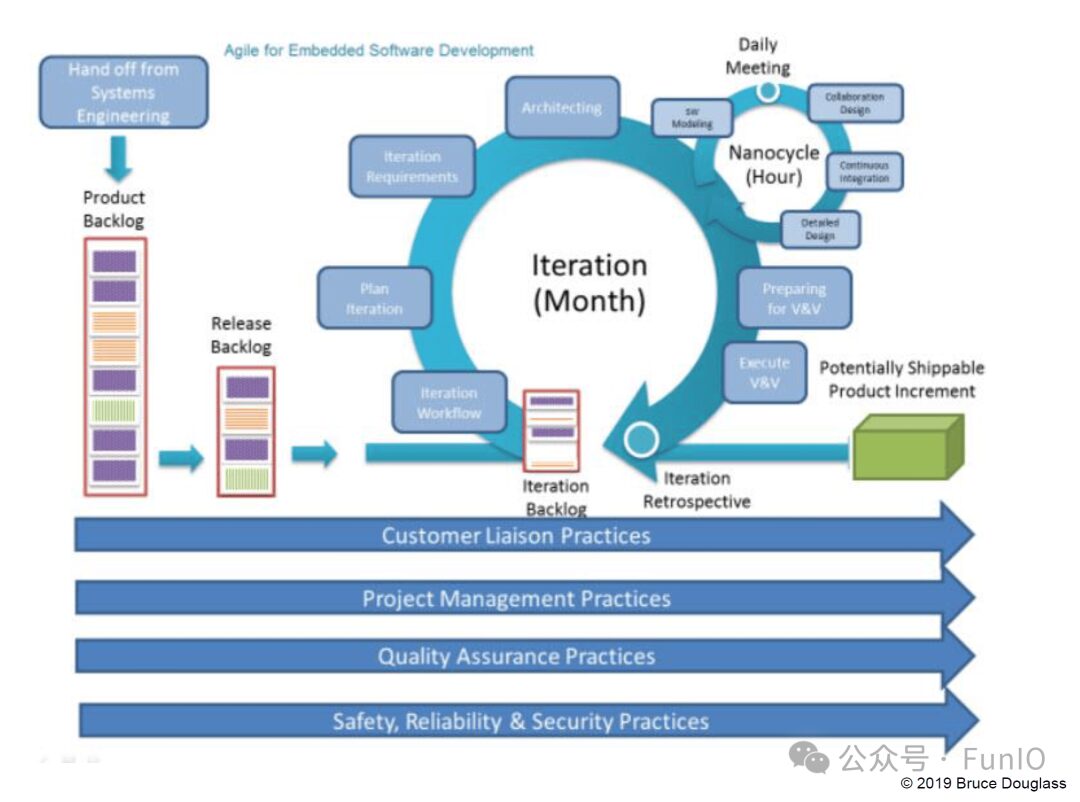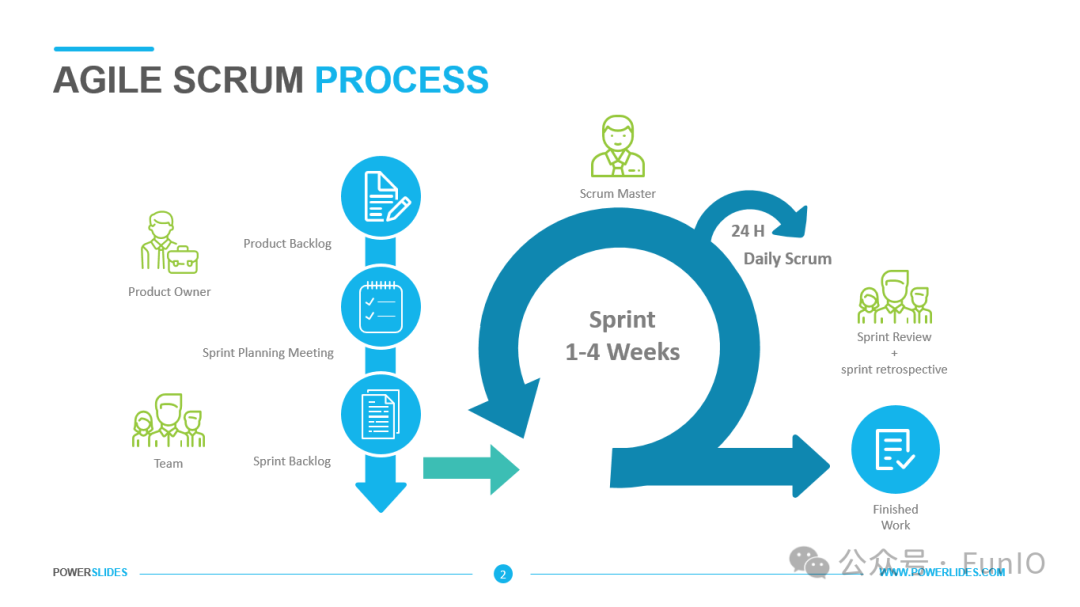

Introduction
Traditional embedded software development often faces numerous challenges, such as frequent changes in customer requirements, long development cycles, difficulties in hardware-software integration, and complex testing and validation. The traditional waterfall development model proves inadequate in addressing these challenges. Agile development, as an iterative and incremental software development approach, has gradually gained attention in the embedded software development field due to its advantages of rapid response to changes, improved development efficiency, and enhanced product quality. This article will delve into how Agile methods can take root in embedded software development, analyzing their advantages, challenges, and corresponding solutions.
Core Principles and Practices of Agile Development
The core of Agile development is the four values and twelve principles proposed in the Agile Manifesto. The practices closely related to embedded development include:
-
Iteration Development: Agile development proceeds with short cycles (typically a few weeks or a month) of iteration, each producing a usable product increment. Iteration represents a larger iteration cycle (e.g., a month), while Nanocycle represents shorter development cycles (e.g., daily stand-up meetings or shorter coding/testing cycles). This layered iterative approach helps teams better plan and track development progress. -
Continuous Integration: Continuous integration emphasizes frequently integrating code into a shared codebase and using automated builds and tests to detect integration issues early. In embedded environments, virtual hardware, simulators, or target hardware can be used for continuous integration testing. -
Test-Driven Development (TDD): TDD advocates writing test cases before writing code to ensure code quality and testability. In embedded development, unit testing frameworks and hardware-in-the-loop testing methods can be used for TDD. -
Scrum/Kanban: Scrum is a popular Agile framework that standardizes the development process by defining roles, events, and artifacts (such as Product Backlog, Sprint Backlog, etc.). Kanban is a lighter Agile method that improves efficiency by visualizing workflows and limiting work in progress. Product Backlog, Release Backlog, and Iteration Backlog represent different levels of requirement lists used for planning and tracking project progress. Iteration Workflow illustrates the workflow within an iteration cycle, including planning, development, testing, and review. -
Daily Meetings: Daily meetings are brief meetings held by team members every day to synchronize work progress, identify issues, and coordinate collaboration.
Advantages of Agile in Embedded Software Development
-
Faster Time to Market: Through iterative development and continuous integration, usable software increments can be delivered more quickly, shortening time to market. -
Higher Quality: Through TDD and frequent testing, defects can be identified and fixed early, improving product quality. -
Better Adaptability: Agile methods can better respond to changes in requirements, enhancing the flexibility and adaptability of projects. -
Stronger Team Collaboration: Agile methods emphasize teamwork and communication, improving team efficiency and morale.
Challenges and Solutions of Agile in Embedded Software Development
-
Hardware Dependency: Embedded development often requires close integration with hardware, presenting challenges for Agile development. For example, hardware availability and debugging tool limitations. Solutions include using virtual hardware, model-driven development, and hardware-in-the-loop testing methods. -
Resource Constraints: Embedded systems often have limited resources, requiring developers to make trade-offs in design and implementation. Solutions include optimizing code, using efficient algorithms and data structures, etc. -
Safety, Reliability, and Security Requirements: Embedded systems often have high demands for safety, reliability, and security, which need to be considered during Agile development. Solutions include rigorous testing, code reviews, and security analysis.
Although the application of Agile methods in embedded software development faces some unique challenges, there are also many successful cases. Due to confidentiality in many companies regarding specific project information, publicly available detailed cases are relatively few. However, we can understand how Agile plays a role in the embedded field through some publicly available materials and case snippets.
Here are some cases and application scenarios of Agile in embedded software development:
1. Automotive Electronic Systems Development
Scenario: Automotive electronic systems, such as in-vehicle infotainment systems and Advanced Driver Assistance Systems (ADAS), have complex functions and integrate a large number of hardware and software components. Traditional development cycles are long and struggle to respond quickly to market demands and technological changes.
Agile Application: Some automotive manufacturers and suppliers have begun adopting Agile methods for development. They decompose the system into small functional modules, each handled by an independent Agile team. Through short-cycle iterative development and continuous integration, new functionalities can be delivered faster and existing ones improved. For example, a team responsible for developing the navigation module iteratively improves map display and route planning functionalities.
Key Practices:
-
Model-Driven Development (MDD): Use models for system design and simulation to reduce dependency on actual hardware. -
Hardware-in-the-Loop (HIL) Testing: Integrate software into hardware simulators for testing, identifying hardware-software integration issues early. -
Continuous Integration and Automated Testing: Establish automated build and testing pipelines to improve integration and testing efficiency.
2. Medical Device Development
Scenario: Medical devices have extremely high reliability and safety requirements for software. Traditional development models emphasize strict documentation and processes, which can lead to prolonged development cycles.
Agile Application: Some medical device manufacturers attempt to adopt Agile methods while ensuring safety. They ensure that each software increment delivered in each iteration meets safety standards through rigorous testing and validation processes. For instance, a team responsible for developing firmware for a heart rate monitor iteratively improves algorithm accuracy and stability.
Key Practices:
-
Rigorous Testing and Validation: Emphasize unit testing, integration testing, system testing, and user acceptance testing to ensure software quality. -
Code Review and Static Analysis: Use code review tools and static analysis tools to detect code defects and security vulnerabilities early. -
Compliance Management: Follow regulations and standards in the medical industry, such as ISO 13485, IEC 62304, etc.
3. Industrial Automation Control System Development
Scenario: Industrial automation control systems often require integration with various hardware devices and have high real-time requirements.
Agile Application: Some industrial automation companies adopt Agile methods to develop control software. They conduct early testing through simulators and virtual environments, followed by final verification on actual hardware. For example, a team responsible for developing robot control software iteratively improves the robot’s motion control algorithms and sensor data processing.
Key Practices:
-
Real-Time Operating Systems (RTOS): Use RTOS to meet the system’s real-time requirements. -
Hardware Interface and Driver Development: Develop corresponding interfaces and drivers for different hardware devices. -
Integration Testing and System Testing: Integrate software into the actual hardware environment for testing, verifying the system’s functionality and performance.
General Case Description
Small Team Rapid Iteration: A small embedded team needs to quickly develop firmware for data collection and processing of a new sensor. They adopt the Scrum framework with a two-week iteration cycle. Each iteration includes requirement analysis, design, coding, testing, and integration. Through continuous integration and automated testing, they can quickly identify and resolve issues and deliver usable firmware versions on time.
Responding to Requirement Changes: An embedded project encounters new requirements proposed by the customer during development. If a traditional waterfall development model were used, it might require redoing requirement analysis and design, leading to project delays. However, after adopting Agile methods, the team can incorporate new requirements into the next iteration’s development plan and promptly adjust the development direction to better meet customer needs.
Conclusion
The above cases and descriptions indicate that Agile methods can achieve success in embedded software development. The key lies in selecting appropriate Agile practices and tools based on specific project characteristics and constraints, and adjusting them to align with the characteristics of embedded development. For example, more emphasis is needed on hardware integration and testing, safety, reliability, and real-time aspects.
Although detailed public cases are limited, more and more companies are beginning to attempt applying Agile methods to embedded software development and achieving positive results. With the continuous development of related technologies and tools, Agile is expected to see broader applications in the embedded field.
Appendix: The Four Core Values and Twelve Principles of Agile
The Agile Manifesto, published in 2001 by a group of software developers, aims to promote more effective and flexible software development methods. It contains four core values and twelve principles, which together form the foundation of Agile development.
Four Core Values
The Agile Manifesto emphasizes the following four comparisons, stating that while the right side has value, we value the left side more:
-
Individuals and Interactions over Processes and Tools -
This means that in Agile development, people are the most important factor. Effective communication, collaboration, and interaction among team members are more important than rigid processes and tools. -
Working Software over Comprehensive Documentation -
This means that delivering usable software is the primary goal. Excessive documentation may slow down development progress, while Agile development focuses on quickly delivering usable software versions. -
Customer Collaboration over Contract Negotiation -
This means that continuous communication and collaboration with customers are more important than strict contract terms. Agile development encourages development teams to work closely with customers to jointly define requirements and adjust development directions in a timely manner. -
Responding to Change over Following a Plan -
This means that Agile development can better respond to changes in requirements. Rather than sticking to the original plan, it is better to flexibly adjust the development direction to adapt to the constantly changing market and customer needs.
Twelve Principles
Based on the above four values, the Agile Manifesto presents twelve principles that further elaborate on the specific practices of Agile development:
-
Our highest priority is to satisfy the customer through early and continuous delivery of valuable software.
-
Emphasizes early and continuous delivery of valuable software to meet customer needs.
-
Emphasizes short-cycle iterative development for faster delivery of usable software versions.
-
Emphasizes close cooperation and communication between business personnel and developers.
-
Emphasizes a people-centric approach, granting team members sufficient autonomy and trust.
-
Emphasizes the importance of face-to-face communication, especially within the team.
-
Emphasizes using working software as the primary measure of project progress rather than other metrics.
-
Emphasizes a sustainable development pace, avoiding excessive overtime and fatigue.
-
Emphasizes the importance of technical excellence and good design to improve agility.
-
Emphasizes simplicity, avoiding unnecessary work.
-
Emphasizes the importance of self-organizing teams, encouraging team members to manage and make decisions autonomously.
-
Emphasizes continuous improvement, requiring teams to regularly reflect and adjust their working methods.
These values and principles together constitute the core philosophy of Agile development, guiding Agile teams in software development. Understanding and applying these values and principles can help teams better respond to change, improve efficiency, and deliver high-quality software.
This article and previous articles on embedded software design patterns are derived from Bruce Powel Douglass’s lecture on <Design Patterns for Embedded Systems in C>. You can get it by sending design patterns in the WeChat public account background.
State Machine Pattern in Embedded Systems
Concurrency Patterns in Embedded Systems
Behavioral Patterns in Embedded Software Development
Structural Patterns in Embedded Systems Software Design
Prototype and Builder Patterns in Embedded Software Development
Factory Pattern Application and Analysis in Embedded Systems Software Development
Singleton Pattern Application and Analysis in Embedded Systems Software Development
Creational Patterns in Embedded Systems Software Design